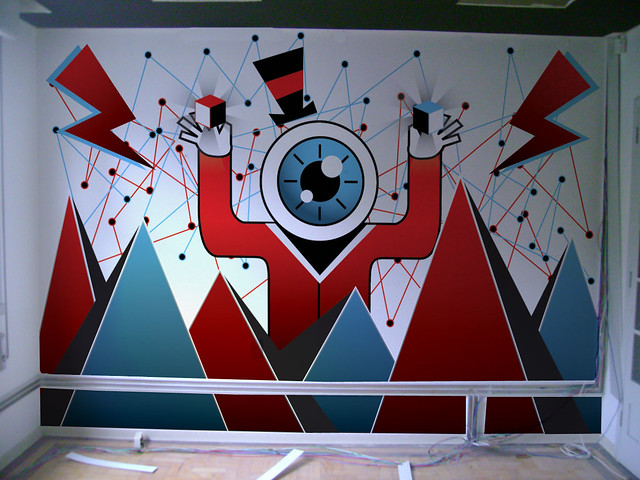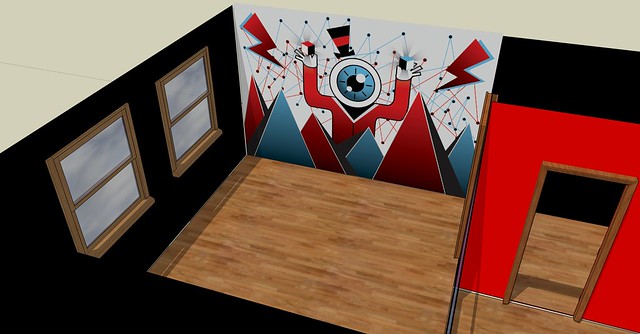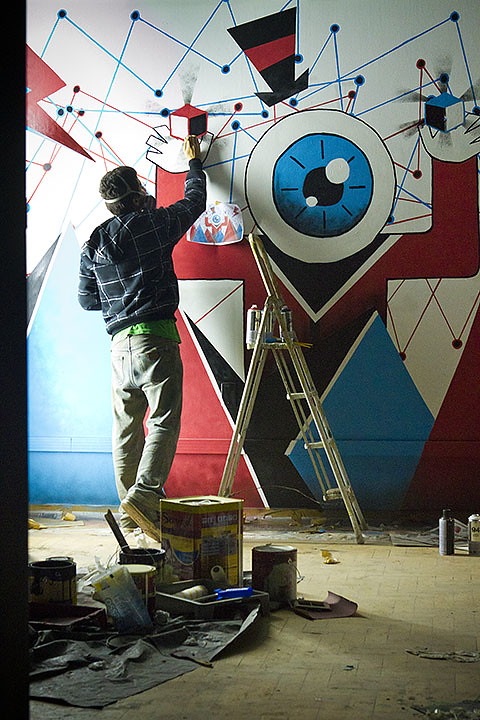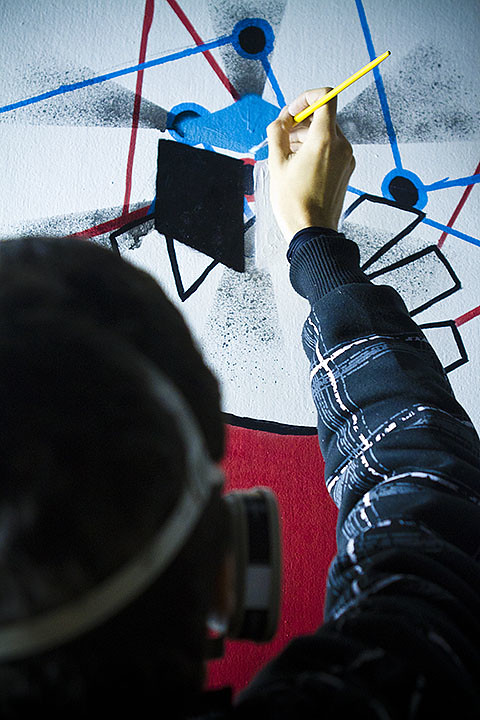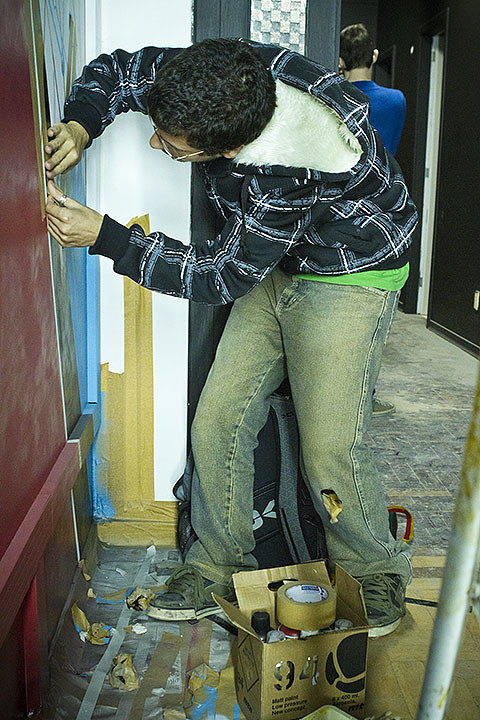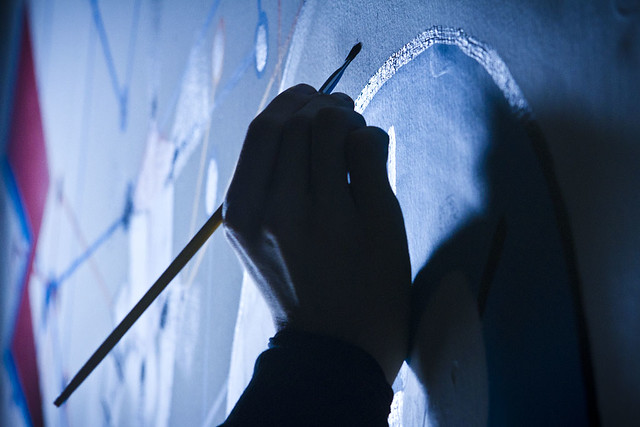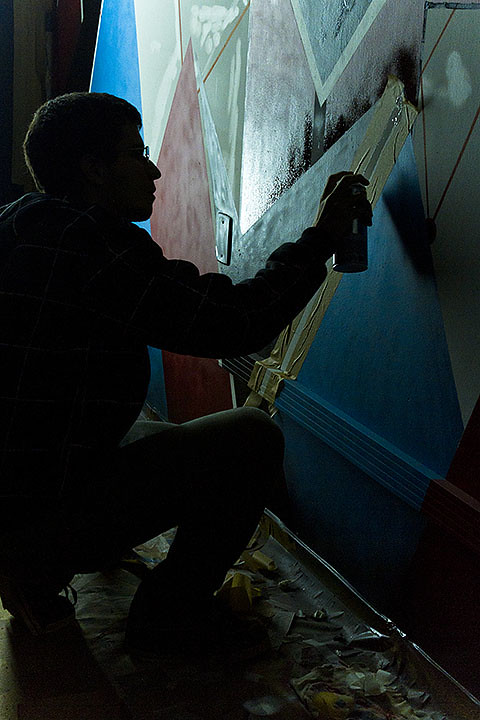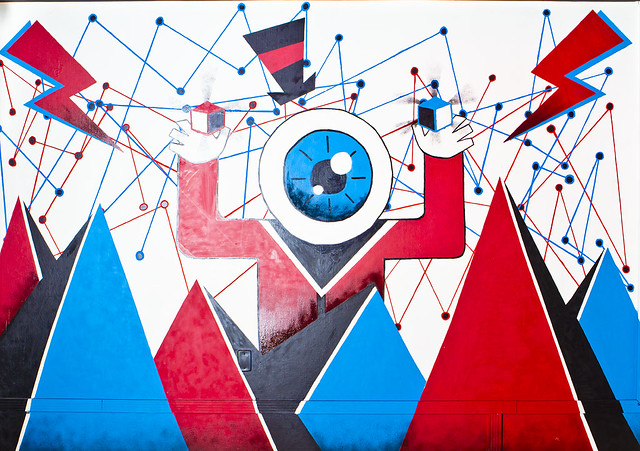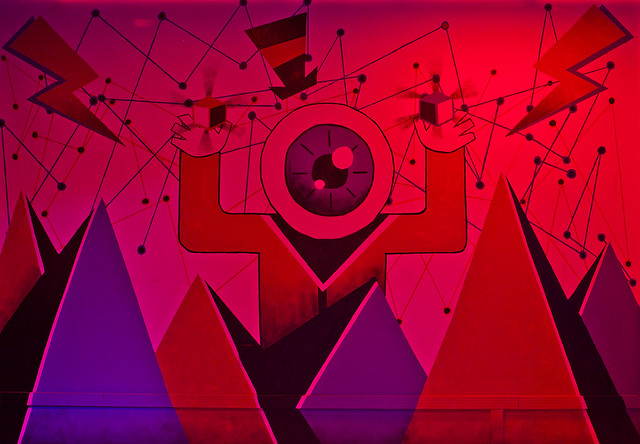Hey buddies! I'm Marcos Torres, a 20 years old art director/freelancer from Brazil, I'm here to bring some new interesting stuff to you. You can see my portfolio at https://flickr.com/marcostorres. Any request or jobs opportunities send to [email protected], also follow me on Twitter https://twitter.com/marcos333 to get in touch with cool design news.
Tips on taking your project from the paper to the wall
Sometime ago, before I got interested in street art and other tradicional medias, I was walking thru a street and stumbled with a graffiti artist painting a huge mural. I asked him how he could scale from such small drawing to a big wall like that, he said that this was due his experience and nothing more. Not satisfied with this simple answer, I found that after doing a few works on bigger scales I should share with you some tips on how transfer your artworks on bigger scales.
So, basically what I'm going to teach today is couple of tips I learned from my own experience, I'm going to use a recent project so I can exemplify and justify all that I'm going to say. Also I would like to thanks Juliano Araujo for the awesome photo shoot he did of this project. The project I will present was done for a Night Club in Porto Alegre, Brasil.
Always make a pre-project
Some may wonder "Hey, I already did that drawing that I will scale, so what's more to do?" , well first of all you should think that there's a lot of factor that involve painting a wall. Before you start the drawing you should ALWAYS visit the place and take the measures of the wall and take a lot of photos. Why? Because you can make your drawing on the actual size or scale it on Illustrator or Photoshop, trust me this one of the best things If you want it to get as you imagined.
Second thing: Having the illustration done, remember the photos you took when you visited the place? Well, take then to your computer, because it's time to make some simulations. However, feel free not to just make normal 2D simulations on Photoshop, you got to understand how the public will interact with that. So a good tip it's to make at least a simple 3D simulation, you can make some simple but yet effective simulations with applications like Google Sketch Up. This will give you a deeper understanding of the space and the visibility of the artwork, what is quite important If you're working indoor, like was my case. Everyone who worked with tradicional medias knows that is always necessary to make at least two budgets for a project: a materials budget and your invoice. I know nobody wants to work for free, but you can't work without your tools, so before anything you should think about how much ink you're going to use, brushes you will need and other stuff. One of the worst things that can happen to you is working hard on a project and suddenly you have to stop because theres not enough ink or other resource you may need. So always think on the materials first and calculate your invoice later. Remeber when I said that you should measure the wall/place your going to paint and use the same measures in the project on Photoshop/illustrator? So, this will help you a lot when you're going to tranfer it, in my case I had to transfer the measures from centimeters to meters, the wall had 2,6 x 3,7 meters so on Illustrator I did the illustration with 26 x 37 centimeters. It may sound obvious, but you must get the measures of every element you can, having the measures and making a GRID, will make almost impossible to make big mistakes. I'm truly addict to GRID's , why? Because they make graphic arts more logic and organized. Even while I'm doing a illustration, I always make a simple GRID to at least divide it on a X and Y axis. So, my tip is to do it on the digital project, dividing the illustration in sectors, almost like puzzle pieces. And using masking tape, divide the wall trying to make the same sector division you created. Trust me, this will make it almost piece of cake to execute, regardless the detailment of the piece. When dealing with offline medias you gotta understand what tools are better for each surface. Some walls are more flat and other are more texturized, you got to have it in mind when planning how to execute your illustration. Let me give you a example: I though I would do the outline of this piece with a 8k pen Uniball Posca, unfortunately what happened was that the pen didn't stick well over other paints and so I had to do it oldschool: using a brush and the ink from the spray cans to do the outline. So, whatever the tools you might plan to use, always have a plan B If things don't work out as they should. Once during a workshop, a graffiti artist called Graphis teached us a really simple way to create perfect circles on a wall: Using a shoelace and a spray can on the other hand he made a "hand compass" by simply rotating his hand grabbing the shoelace. The truth is there a lot of ways to make circles, you can use stencils, do it freehand and other ways. However you should always try to simplify the execution, not because of a matter of time necessarily, but because of the materials and the final result. Sometimes, a drip or scratch here and there is what make it look real and handmade, so do it the way you want, just remember that it's a artwork, not a billboard. So, I hope you learned a bit from my experience and if you want to see the whole process of this artwork, please watch the video bellow, he quite explains everything I told here. Lord of his own Kingdom from Marcos Torres on Vimeo.
Make a good budget
Measure everything
Use a GRID
Choose the right tools
Trust on simple techniques
The Final Result
Original Link: http://feedproxy.google.com/~r/abduzeedo-tutorials/~3/PX2DLbFMCPY/tips-taking-your-project-paper-wall
Abduzeedo
 Abduzeedo is a collection of visual inspiration and useful tutorials
Abduzeedo is a collection of visual inspiration and useful tutorialsMore About this Source Visit Abduzeedo


